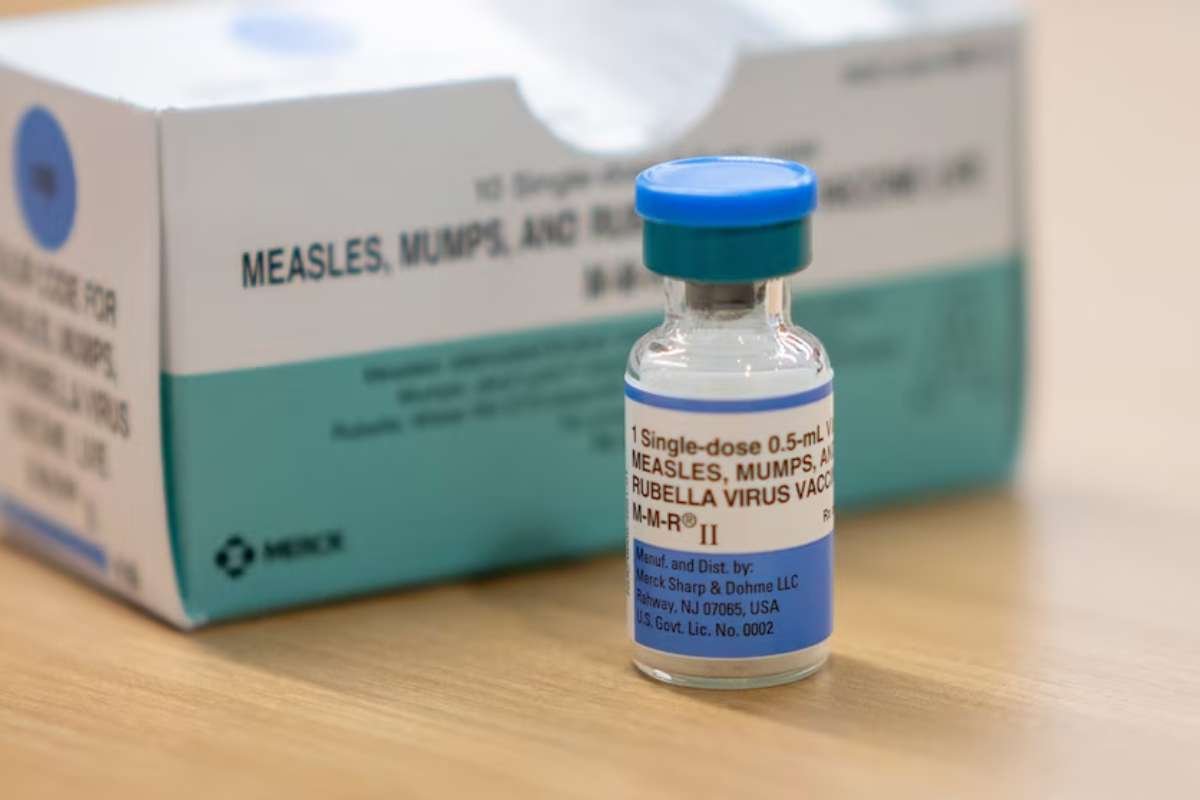According to new data released by the US Centres for Disease Control and Prevention on Thursday, the percentage of kindergarten students who received their state-mandated measles vaccinations remained below the federal target last school year, and the rate of vaccine exemptions for children reached the highest level ever recorded in the country.
According to the research, coverage for four important vaccines decreased in most states for the 2022–2023 school year: the varicella vaccine for chickenpox, the poliovirus vaccine, the diphtheria, tetanus, and acellular pertussis (DTaP) vaccine, and the measles, mumps, and rubella (MMR) vaccine. Reduced vaccination rates increase the possibility of epidemics, making the nation more susceptible to illnesses that might result in life-threatening conditions or even death.
“Immunisation programmes, schools, and providers must ensure children are fully vaccinated before school entry, or before provisional enrollment periods expire,” the CDC researchers said, “because clusters of under-vaccinated children can lead to outbreaks.”
Dr. William Schaffner, a professor in the Division of Infectious Diseases at Vanderbilt University Medical Centre in Nashville and a former medical director of the nonprofit National Foundation for Infectious Diseases, called the trend “disturbing” because many of these diseases have been eradicated from the country for many years. The report did not implicate Schaffner.
It would be awful, he remarked, “to lower our guard—the protection of our population.”
The rates of vaccination coverage decreased from 95% in the 2019–20 school year to 93% in the 2021–2022 school year. According to the report, last school year’s reported vaccination coverage was still roughly 93%, with 93.1% of people having had MMR and poliovirus shots and 92.7% receiving DTaP.
Kindergarteners, or kids between the ages of five and six, are exempt from the state’s vaccination requirements. This number rose from 2.6% in 2021–2022 to 3% in 2022–2023 school year. The CDC reports that exemptions have expanded in 40 states as well as Washington, DC.
At least one vaccine exemption that covered more than 5% of kindergarten students was reported by ten states. The researchers noted that exemptions greater than 5% restrict the amount of vaccination coverage that can be achieved, increasing the possibility of a vaccine-preventable illness outbreak.
A national MMR coverage of roughly 93% in the 2022–2023 school year corresponds to nearly 250,000 kindergarten students who could contract the measles, according to the new report. Though they were permitted to attend school during a grace period for provisional enrollment, about 4% of kindergarten students nationwide were not fully vaccinated against the measles or were officially excused from receiving it.
Schaffner draws attention to the fact that there are thousands of school districts in the US, each with its own distinct documentation about vaccines.
“Some school districts pay less attention to vaccination requirements than others, which means that some kids get through the cracks and might be accepted into kindergarten before meeting the state’s vaccination requirements,” the speaker stated.
Kindergarten Vaccination health exemptions soar
The data has certain limitations, such as the inability to compare states due to differences in state vaccination laws regarding the kind of vaccine and the quantity of doses needed, as well as data collection techniques. The CDC does not mandate immunisations for students.
Every state has legislation mandating certain vaccinations for pupils, and all school vaccination regulations allow children to be excluded if they have certain medical conditions. However, the National Conference of State Legislatures reports that 15 states permit philosophical or moral exemptions for children, and 44 states, including Washington, DC, grant religious exemptions. Over 90% of reported exemptions and nearly 100% of the rise in the national exemption rate in the current survey were non-medical exemptions.
The researchers also observed that during the Covid-19 epidemic, when many vaccines were stopped or postponed, the kindergarten class of 2022–2023 attained age eligibility to finish the majority of state-mandated immunisations.
According to Schaffner, vaccination reluctance also plays a part. He also notes that because the parents and grandparents of the present generation did not experience many of the diseases that the vaccines protect against, “they underestimate how potentially serious they are.”
At least 20 states have explicitly prohibited the Covid-19 vaccine from being included in school regulations, thus as of right now, it is not required in schools. This year, the CDC’s recommended immunisation schedule for adults and children did include that vaccine.
The CDC advises routine vaccination against 14 diseases for children under the age of two, in addition to school requirements.
Going forward, Schaffner stated, “the medical community as a whole will have to keep educating, convincing, and reassuring parents that vaccinations are absolutely critical.” “Vaccine scepticism and hesitation are real and they won’t go away.”
Also Read: What Can I Do After My COVID-19 Vaccination?






.jpg)
